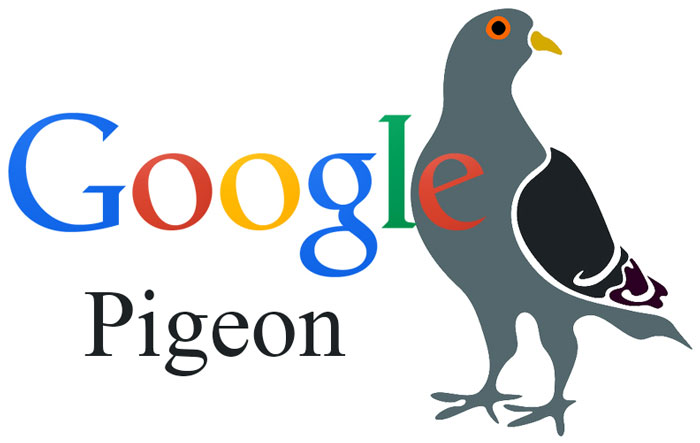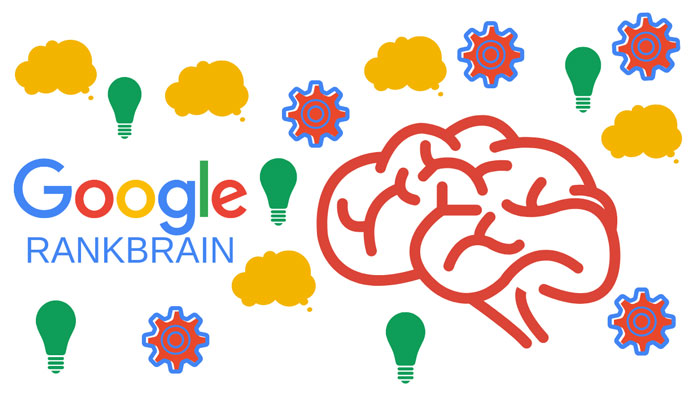One thing that comes up in SEO is the search engine algorithm, which essentially shows the behavior of the Google search engine. Google’s algorithms or SEO algorithms
make this search engine more brilliant day by day, and in simpler terms, these algorithms identify errors and points awarded to sites.
Optimizing your site according to search engine algorithm is better for your SEO to succeed. Stay with us in this article to fully explain Google algorithms.
Google Algorithms – what are SEO algorithms?
In this article, we intend to give you information about Google’s algorithms. If you are aware of the goals and behind the scenes of this search engine’s performance, you can determine your site’s strategies more accurately and plan for its optimization. Stay with us to get detailed information about search engine algorithm.
What is the purpose of Google?
The most used and popular search engine among users is Google, which provides many features to users. The goal of this search engine is simple: “providing the best and most relevant answers to users in the shortest possible time.” algorithms need to be designed and modified continuously.
How does google’s algorithm work
Search engine algorithm are a set of instructions to achieve a specific goal. Likewise, search engine algorithm are guidelines for analyzing websites and improving the results that can be presented to users.
Algorithms serve two primary purposes:
- Identifying low-quality and spam sites and reducing their rank
- Identifying valuable and useful sites and increasing their ranking
Get to know search Engine Algorithm better
Search engine algorithm are divided into two categories. The main algorithms are part of the central core of the Google search engine, and Google’s side algorithms are used to identify low-quality sites and improve search results.
This article will introduce some essential search engine algorithm and how many google algorithms are there.
-
-
Google Panda Algorithm
-
The Google Panda algorithm was created to evaluate the quality of web page content and gives each page a quality score, which is used as one of the ranking factors. The first version of the Panda algorithm was introduced on February 23, 2011. And the next day, Google explained it by publishing a blog post.
According to that post, Panda’s algorithm significantly improved at the time as it influenced 11.8% of search results.
Google created search engine algorithm to reduce the ranking of sites whose content is not helpful and valuable for the user or copied from other websites. And on the other hand, it improves the ranking of sites with high-quality and helpful content. google panda effects on page seo. so check the on page seo checklist
The things that this algorithm checks are:
- Duplicate content
- Content copied or aggregated from other websites
- Short or sparse content
- User-generated spam
- Keyword overuse
- Poor user experience (UX)
Optimization for pandas algorithm
Check the site for duplicate content: This is one of the most common triggers for the Panda algorithm. Therefore, we recommend checking the site’s content regularly to ensure no such problem. If you cannot remove duplicate pages for valid reasons, use 301 redirect or canonical tag. Another solution is to block those pages with a txt file or noindex metatag.
Check the content for duplicates: Another driver of the Panda algorithm is external duplicate content or copied from other websites.
Avoid creating pages with little content: This means pages whose content includes few words and a lot of advertisements and links and gives little information to the user. Of course, it is essential to note that the number of appropriate words for each content depends on the purpose of that page and the keyword intended for it.
Check your site for excessive use of keywords: Over-optimizing a page for a keyword reduces the quality and readability of the content.
Fix the detected problems and items as soon as possible: it is better to improve the problems until this algorithm is sensitive on your site and checks the pages.
-
-
Google Penguin Algorithm
-
Google created The Penguin anti-spam algorithm to identify and reduce the ranking of sites that have created links in unnatural ways. Since the end of 2016, this search engine algorithm has become part of Google’s core algorithm because it runs in real-time. Violating sites are detected and penalized faster, reducing recovery time.
The things that this algorithm checks are:
- Backlinks from low-quality and spam sites
- Backlinks from sites created for link building (PBN)
- Backlinks from sites with unrelated content
- Paid links
- Links with anchor text are over-optimized
Of course, you should note that this search engine algorithm also examines web pages in terms of keyword stuffing.
Optimization for Penguin algorithm
Always keep an eye on your site’s link growth: Google will never penalize a site for having one or two spam links, but having many non-original backlinks can be problematic.
Get rid of harmful links: Ideally, you should ask the web admins of the link-building sites to remove your spam links. If the webmasters do not respond or the number of harmful links is high, you can use the Google Disavow tool. Disavowing links means that you tell Google to ignore these links when evaluating the site’s links.
-
-
Google Hummingbird Algorithm
-
The HummingBird algorithm interprets search queries (significantly larger and conversational queries).This search engine algorithm is high-speed and accurate. It recognizes synonyms of words to some extent and helps Google provide results closer to what the user wants (and not necessarily including the keyword of the search term).
Although the keyword of the search term is critical, Hummingbird can provide better and more relevant results to the user with the help of Google’s knowledge graph (The Knowledge Graph) and semantic search. In fact, by using this search engine algorithm, instead of listing the results containing the keyword, Google shows the results that are semantically close to the search term in the SERP results.
The things that this algorithm checks are:
- Targeting a keyword
- Overuse of keywords
Optimization for the hummingbird algorithm
Broaden your keyword research: Given the performance of Hummingbird, it’s a good idea to focus on related searches, synonyms, and terms to diversify your content rather than relying on short and specific keywords.
Know the language of your audience: A great way is to use tools to identify your keywords, such as brand names, competitors, industry terms, etc., on social networks and a larger scale, on the web, and check how your audience is talking about them.
Instead of trying to match keywords perfectly, consider the concepts: unnatural phrases are still used in website content, especially in titles and meta descriptions, but as search engines grow in natural language processing, this can become a problem.
Do not use robots to create a content:
If you are one of this category and you use language like robot language for the content of your site pages, please stop! Using keywords in the title and description is very important, but ensure that the content’s author looks like a human, not a robot! Improving the title and meta description will undoubtedly attract users and, as a result, increase the site’s click rate.
Use standard markup (Schema): Schema is a series of data and instructions added to the website code to mark the content and specify the essential parts. In this way, Google will have a better understanding of the page’s content.
-
-
Google Pigeon Algorithm
-
It must have happened to you to look for the nearest store, hospital, restaurant. Since Google’s goal is to provide the best results to users and to satisfy them as much as possible, it has presented the Pigeon algorithm.
This search engine algorithm attempts to personalize search results by examining the user’s search term and providing the best and closest results if the user’s location is involved or related to a local business. The Pigeon algorithm uses location and distance as crucial factors in ranking results and significantly impacts Local Seo.
The things that this algorithm examines are:
- Poorly optimized pages
- Improper setup of Google My Business page
- Name, address, phone number (NAP) mismatch
- Lack of documentation in local directories (if necessary)
Optimization for pigeon algorithm
Register your business information in Google Map: The pigeon algorithm has more integrated the search engine and Google map. One of the crucial factors for ranking and displaying your site based on location is Google’s correct understanding of your business location.
On the other hand, in this way, users can express their opinions about your business, which is one of the critical and influential factors in local SEO.
Be careful that your name, address, and phone number (NAP) list on the site: Google will look at the website you have linked to through the information recorded in the Google map, and if matched, the name, address, and phone number. You have done your work correctly.
Register your site in local directories: Directory sites list businesses in different regions and cities. These sites have grown significantly with the advent of the pigeon algorithm.
-
-
Google’s Mobilegeddon Algorithm
-
The number of people using mobile phones for internet searches is increasing yearly. According to published statistics, 52.2% of a website’s traffic belongs to mobile devices, and, naturally, Google pays special attention to mobile users.
The Mobilegeddon algorithm, or the purpose of checking whether web pages are optimized for ranking on mobile devices and are so-called mobile friendly, was created.
Pages that are not optimized for mobile will suffer a drop in rank. This search engine algorithm does not affect desktop searches.
The critical point here is that Mobilegeddon is a page-level algorithm, meaning that one website page may rank well and others may not.
This algorithm considers the following:
- No mobile version of the page
- Improper configuration of page appearance
- Illegal content
- Use the plugin
Optimization for Mobilegeddon algorithm
The design of your site should be reactive or responsive: make sure your site is displayed correctly on all types of screens.
Use Google’s Mobile-Friendly Test Tool: You must meet Google’s mobile-friendly criteria to rank well in mobile search results.
Get help from site speed testing tools: One of the most important factors for mobile users is page loading speed.
-
-
Google’s RankBrain Algorithm
-
The RankBrain algorithm is a machine learning system that helps Google understand the meaning of a search term to provide better and more relevant results.
This search engine algorithm is like the hummingbird algorithm but more advanced. Like humans, the RankBrain algorithm learns over time from the experiences it acquires and performs better. According to search engine algorithm, this search engine algorithm is the third most important and influential factor in ranking sites.
So just as it has a query processing component, it also has a ranking component. The noteworthy point is that this search engine algorithm can probably summarize a page’s content and evaluate the relevance of search results.
The RankBrain algorithm relies on traditional SEO factors such as links, on-page optimization, etc., but it also pays attention to other factors specific to each query. Identifies the relevant factors of the indexed and relevant pages and ranks the SERP results.
The things that the RankBrain algorithm checks are:
- Absence of specific communication factors in each query
- Poor user experience (UX)
Optimization for RankBrain algorithm
Improve user experience: RankBrain’s algorithm is constantly analyzing user behavior so that it can change accordingly. Use user experience factors in Google Analytics, such as click rate (CTR), bounce rate, and session duration.
Research regarding competitors’ performance: One of the tasks of the RankBrain algorithm is to identify the characteristics of web pages related to any specific query and use them to rank in the search results.
Those features can be anything that has a positive impact on the user experience. For example, pages that have more content and attractive elements are more successful. Although there is no list of these features, you can get good results by reviewing and analyzing the standard features of competitors.
-
-
Google’s Blind Mouse Algorithm
-
Google created The blind mouse (Possum) algorithm to provide more quality and relevant results to the user based on the user’s location and the business’s physical address. This search engine algorithm collects recent changes in Google’s local ranking filter.
With the help of the Possum algorithm, Google offers more mixed results depending on the searcher’s location and the search term. In fact, the closer you are to a business in terms of location, the more likely it is to show up in local results.
The critical point is that this search engine algorithm also boosted businesses outside the city limits. In the past, the problem with local SEO was that businesses outside the city limits, even when they were active on keywords containing the city name, would still not appear in the city search results. After the blind mouse algorithm, many of these businesses significantly improved their local rankings.
In addition, businesses with the same address as other businesses in the same field will suffer a drop in Google results. In the past, google filtered them based on their phone number or similar website domain.
For example, consider a physical therapy center with a separate work profile registered for the center and each of the three physical therapists. These profiles are all linked to the same site and have the same contact number.
One or two would appear in local search results, and it would filter out the rest. With the blind mouse algorithm, many businesses were filtered due to having the same address and workgroup.
The things that the blind mouse algorithm examines are:
- Having the same physical address as a business in the same industry
- Competitors whose business location is closer to the user
Optimization for blind mouse algorithm
Track ranking based on a specific geographic location: the location you search is very effective in ranking.
Make a list of local keywords: The blind mouse algorithm will provide different search results for relatively similar keywords.
Summary Of Google Algorithms
Google algorithms are constantly changing and improving. This article introduced some important search engine algorithm and ways to optimize them. Now we know that the Panda algorithm focuses on the quality of the content. Penguin’s algorithm fights against illegal linking.
With the help of the hummingbird algorithm and semantic search, Google provides better and more relevant results to users. Pigeon and blind mouse algorithms consider the user and business location as a ranking factor and provide the closest and best results.
The Mobilegeddon algorithm examines sites based on whether they are compatible with mobile devices. The RankBrain algorithm is constantly learning and growing by analyzing user behavior with the help of artificial intelligence.
Each of these search engine algorithms helps Google in a way to achieve its goal of “providing the best answer to users.” Thank you for being with Digiwaremarketing until the end of this article.
Be sure to pay attention to Google’s algorithms when optimizing
One of the ways to succeed in SEO is to pay attention to search engine algorithm when optimizing your site. Try to consider algorithms as much as you can when optimizing. As discussed in the article What is SEO, SEO methods are very different, but you should use logical and moral methods.
You should use methods to avoid Google errors. search engine algorithm detect most errors. Try to get as many points as possible from Google’s algorithms to improve your site’s ranking on the SERP pages. We suggest you read technical SEO articles and the impact of link building in SEO for better optimization of your site.
What do you think about search engine algorithm? To what extent do you pay attention to SEO algorithms
when optimizing? Share your thoughts with us below this post.








